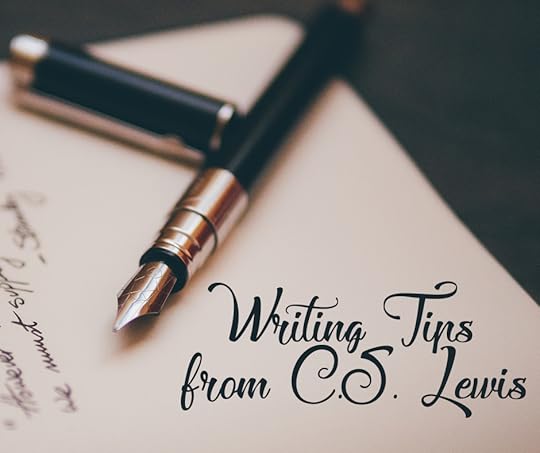Peter Lopez Jr.'s Blog: Xulon Press Blog , page 33
March 20, 2017
Writing Strong Female Characters
 In an age of Women’s Marches and calls for equal pay for women, the question of femininity and what makes a strong woman is in the spotlight. Art reflects life, and the presence of strong female characters in fiction is in high demand, as girls and women alike look for characters to read about and emulate, from Elizabeth Bennet to Laura Ingalls Wilder to Hermione Granger.
In an age of Women’s Marches and calls for equal pay for women, the question of femininity and what makes a strong woman is in the spotlight. Art reflects life, and the presence of strong female characters in fiction is in high demand, as girls and women alike look for characters to read about and emulate, from Elizabeth Bennet to Laura Ingalls Wilder to Hermione Granger.
So how can you ensure that your work includes strong female characters? For that matter, what is a strong female character?
Strong female characters are not perfect.
Strong characters, regardless of gender, have character flaws and make mistakes—just like real people do. No human is only good or only evil, and neither should your characters be. You want your readers to root for your protagonist to succeed, but we also need to see them mess up along their journey. This inclusion of trial and error, of obstacle and failure, is fertile ground for character development. It’s the screw-ups and missteps that will make your character relatable and, therefore, impactful for your reader.
Strong female characters are not stereotypes.
While your characters should be recognizable and relatable, they should also surprise us in some way, revealing an undercurrent of complexity that challenges the reader. To accomplish this, first challenge yourself to expand your definition of a “strong” woman. Could she be middle aged or elderly rather than a feisty young adult? Could she be a working mom or a single mom? Or could she find love later in life, or forgo romantic entanglements altogether? Take the time to formulate strong female characters that push the reader with their thoughts, speech, and actions while still being believable.
Strong female characters are surrounded by other strong women—and strong men.
Strong female characters are often portrayed as outcasts or loners. Challenge this status quo in your writing. What kinds of friends can you imagine your strong female character surrounding herself with? And could those friendships surpass the boundaries of age groups? Strong female characters often draw on the wisdom of older strong female characters.
Keep the Bechdel test in mind while writing, which analyzes films and TV shows to see how often two women or girls talk to one another about something other than men or boys. Be sure to include scenes with rich conversation between female characters about their struggles, studies, families, work, and dreams.
At the same time, don’t be afraid to surround strong women with equally strong men. However, resist the pull of the cliché love triangle as a plot device. Instead, push your characters to have relationships with strong men in the forms of friendship, mentorship, or even antagonism. Father-daughter relationships are also great ways to show emotional depth for strong female characters with strong male characters.
The root of their strength: Strong Christian women trust in the Lord.
In Christian writing, strong women trust in the Lord—even when their stories appear unconventional from the outside. Think of the strong women of the Bible like Sarah, Deborah, Ruth, Abigail, and Mary. Even though their stories were abnormal or even opposed societal norms, God used them in big ways to accomplish His work. Let your strong Christian female characters do the same.
Remember that strength is not synonymous with autonomy or physicality. Often times, strength is portrayed through perseverance, sacrifice, and vulnerability inspired by the redeeming work of the gospel.
The post Writing Strong Female Characters appeared first on Xulon Press, Christian Self Publishing.
March 9, 2017
Creating Steady Flow in Dialogue

People like to talk, and if you listen to some everyday conversations you will hear some common patterns: lots of “like” and “um”, pointless repetition, interjections of completely unrelated topics, and unfinished or incomplete sentences. This is all fine in real life but would never work in your writing—and this is the core of why capturing dialogue that feels authentic but completes its purpose is so difficult. Whether you are writing your memoir or a fictional novel, these tips will help your dialogue flow and feel more finished.
1. Cut Out the Day-to-Day
All dialogue must move the story forward, therefore there is no room for meaningless words. If the story or characterization would be the same without that section of dialogue, just cut it out. It should provide information to either the reader or the character, it should show who the characters are and what their relationships to each other are like, or it should reveal something about the character’s goals or journey. Every word should do some work, so edit for pleasantries that don’t show anything or routine parts of dialogue, like the character simply saying, “Hello,” when picking up the phone or asking to speak to someone.
2. Don’t Forget the Action
We don’t simply stop moving when we speak, so neither should your characters. This is vital to maintaining the dialogue’s flow and avoiding stale, meaningless conversations that are hard to analyze. Text without context is tricky to interpret after all, so give your readers some hints at your character’s emotional state with some small actions: casually sipping coffee, nervously pouring a drink with shaking hands, looking away while lying, or rubbing her temples in frustration.
3. Watch Your Tags
There is nothing more annoying than reading an endless repetition of, “he said,” and, “she said”. If you set up your characters well enough, readers should be able to tell who is speaking by what they say, how they say it, and what they do while they speak. This means you can simply take out those direct tags and let your reader effortlessly take in a more authentic conversation.
4. Beware of Artificial Explanation
Remember who your characters are and what they already know. You would never have a brother say to his sister, “Mom, whose name is Martha, is going to the nursing home to visit Grandma, like she does at this time every week.” The sister would already know this information, so it sounds stiff and is a wasted opportunity to provide truly valuable description. Instead, imbed the information into dialogue so that readers can put it together on their own.
Writing dialogue that sounds smooth instead of stilted may seem daunting, but when it is done well it can elevate your writing in ways few other elements can. It is worth spending some more time shaping your characters’ words to truly give the impression of true-to-life language with all of its wonderful nuance and subtleties.
The post Creating Steady Flow in Dialogue appeared first on Xulon Press, Christian Self Publishing.
8 Writing Tips from a Literary Master
 The Chronicles of Narnia; The Screwtape Letters, Mere Christianity: C.S. Lewis is recognized as one of the most influential writers and Christian apologists of the twentieth century.
The Chronicles of Narnia; The Screwtape Letters, Mere Christianity: C.S. Lewis is recognized as one of the most influential writers and Christian apologists of the twentieth century.
His insight into writing is impeccable and real, which one American girl learned in 1959 when she asked the revered, British author advice on how to write. What he sent were eight rules he probably utilized himself while creating his literary masterpieces.
In the spirit of C.S. Lewis, we have included those tips he provide and our personal commentary on how we can use this nearly sixty-year-old advice for today’s generation of authors.
1) Turn off the radio
Embrace quiet time as you reflect on what you want to write and how to stylize your story. Outside distractions such as a television, radio or even a person near you could disturb your flow of thought, so look for a quiet place free of distraction and start jotting down what comes to mind.
2) Read good books and avoid most magazines
Although magazines can have quality writing and topics, the style of magazine writing is different from books and is more concise in detail compared to literature. It is better to read books that can prompt your creative juices and flush out your story, books that are what you would read as a reader yourself.
3) Write with the ear, not the eye. Make every sentence sound good.
If in doubt, read it out loud. What you might hear as wrong in a sentence may go unnoticed by someone else, so it is important for a writer to work through the sentences and even read out loud those that don’t look correct by eyesight. You also know how you write, so you will recognize what doesn’t sound like your writing and what does.
4) Write only about things that interest you. If you have no interests, you won’t ever be a writer.
Some authors will feel they have to write on a topic that will guarantee them readers and success. However, you don’t want your passion, time, sweat and tears to be devoted toward a topic that doesn’t drive you to write. Jot down some interests that you would put the time toward to write and be pleased with yourself to complete.
5) Be clear. Remember that readers can’t know your mind. Don’t forget to tell them exactly what they need to know to understand you.
There are readers who are more visual, more audio and more interactive with their learning, but what brings these three learning styles together most is being descriptive in your writing. You want readers to see settings emerge through your words, while also comprehending why you are telling them this story. Don’t give away too many details right away to where their imaginations are hampered by your thoughts, but enough content to where they can align their visuals with your visuals of the story.
6) Save odds and ends of writing attempts, because you may be able to use them later.
Don’t throw any writing away, even if you think it’s the worse you ever written: who knows what could come from those characters you create, the storyline you were stuck on or the plot twist you can’t get out of your mind? As you write, look over past writing attempts and see if you can gleam something new to add to your current prompt.
7) You need a well-trained sense of word-rhythm, and the noise of a typewriter will interfere.
Although many may not write with a typewriter anymore (thumbs up to those who still do), the sentiment is still there: writing down on paper what you will write can work wonders on your manuscript. By writing, you are formulating the words of the manuscript more clearly and seeing the issues that arise. It may be an old-fashioned approach, but you will marvel at what emerges while jotting down thoughts for your book.
8) Know the meaning of every word you use.
We come across this regularly as editors, where words are used that’s meaning doesn’t match up to the message of the sentence or where the same word is used in countless sentences. It is easier than ever to look up words in the dictionary, so become familiar with what words mean and keep a thesaurus handy to see what synonyms and antonyms can be used in place of certain words as well.
*C.S. Lewis’ tips courtesy of www.christianwritingtoday.com
The post 8 Writing Tips from a Literary Master appeared first on Xulon Press, Christian Self Publishing.
Writing While Parenting: Balancing It All

Writing, it seems, has historically been at odds with parenthood. The two tend to want to take over their hosts, consuming all of their time, energy, and creativity. Being a full-time parent means putting yourself on hold, answering to tiny voices and listening to their stories. Their whims become your quests, and the pebbles in their shoes become your own to toss. These are the little diversions that stack up to make your day.
So what are you to do if you feel the pull to write? Writers know that other tiny voice—the one from you gut—that urges you to record what your mind weaves. Ignoring this instinct is pointless. You are meant to write, and you know it. Reaching past the busyness of parenthood is possible, and the two can intertwine beautifully if you are dedicated, creative, and forgiving.
1. No More Guilt
Let go of any guilt you feel about your choices. This step is as difficult as it is important, since feelings of inadequacy can clog your process or tarnish the time you spend with your family. Be in the moment, whatever you are doing, and appreciate where you are. Whether you are working tirelessly on that second draft or enjoying game night with your kids, avoid the temptation to feel guilty about what you think you should be doing instead.
2. Plan, Plan, and Plan Some More
Anyone with kids can tell you that they immediately make life a chaotic scramble of schedules and appointments and commitments. It is possible, however, to carve out time to write if you are diligent and organized. Create a routine for the week and encourage your partner to share their weekly obligations with you so you can plan ahead. In short, get a planner and use it.
3. Prioritize Your Time
Make writing a priority, under your kids’ well being and above signing up to bake 250 cookies for yet another bake sale, and you will find the time and space to write. I can see you shaking your head now, but just try it for two weeks. Practice saying “no” to extra commitments that you don’t have time for anyway. Wake up a little earlier to crank out some writing exercises. Your actions will reveal what you truly want to include in your life, so you have to ask yourself if writing is worth it to you.
4. Embrace Your Perspective
Parenting will force you to evolve in a way that nothing else can. It will show you the messy, bewildering, beautiful corners of life. It will push you to grow in directions you never meant to and will highlight truths you never expected. Raising little versions of yourself can show you what true intimacy within a human relationship is, can make you understand that love and heartache are inextricably linked, and will prove to you once and for all that control is an illusion. All of these lessons are also terribly true when it comes to writing. Appreciate how your parenting experiences affect your writing, whether it is through developing meaningful characters or understanding the complex relationship between love and pain, selflessness and independence.
The post Writing While Parenting: Balancing It All appeared first on Xulon Press, Christian Self Publishing.
March 6, 2017
Lent for Christian Writers

The season of Lent has a rich history in the Christian tradition, calling for believers to prepare for Easter and meditate on Christ’s sacrifice on the cross. As writers, our work always calls for observation and reflection of the events, emotions, people, and scenes around us. So how can we allow this rich period of Lenten reflection and discipline infuse into our writing?
Set a writing goal on your Lenten journey
Lent is a forty-day journey between Ash Wednesday and Easter. On Ash Wednesday, crosses of ashes are painted on the forehead to show our human frailty. At the same time, the ashes are a preview of the Easter message, showing that God brings life and beauty out of death and sin.
As we look forward to Easter Sunday, set a goal for your writing during this journey. Would you like to have a new poem written by its conclusion? Or are you hoping to finally wrap up the manuscript you’ve been working on for years? Take this focused period of time to accomplish a writing goal. Through it, you will create new life through your writing,
Engage in daily or weekly disciplines
Just as believers observe disciplines throughout Lent (fasting, giving up activities, engaging in focused prayer, and giving to others), apply disciplines to your writing life, too.
Maybe you could unplug from social media or binge-watching Netflix to dedicate more time to writing. Or, just like some Christians give up meat on Fridays during Lent, choose a day of the week to get up an hour early to write. Finally, use this time of Christian community to share your writing with others and get feedback.
Allow time to reflect and meditate
As you walk through the spiritual journey of Lent, take time to attend a Lent service at a local church. As you sit in the sanctuary, allow the experience to wash over you. Then, record your experience through the senses of sight, sound, touch, taste, and smell.
What emotions does the service inspire in you? What does this moment during Lent, whether it be Ash Wednesday, Palm Sunday, Good Friday, or Easter Sunday, make you reflect on? Now, integrate those thoughts and emotions into your work. Allow the spiritual journey of Lent inspire your creative process.
The post Lent for Christian Writers appeared first on Xulon Press, Christian Self Publishing.
March 1, 2017
How To Write Romantic Relationships (Without Getting Cheesy)
 I love a good story with some romantic element. It has a way of sweeping me into the characters’ lives and drawing me deeply into their trials and triumphs. Of course there are books that focus on romance as their main genre, but a solid romantic relationship can add dimension to almost any story. The problem is pulling it off without overusing any looks of longing or overdramatic reconciliations (not every argument has to end with someone flying across the world with two dozen roses). Here are some tips to writing romantic relationships that add depth to your story.
I love a good story with some romantic element. It has a way of sweeping me into the characters’ lives and drawing me deeply into their trials and triumphs. Of course there are books that focus on romance as their main genre, but a solid romantic relationship can add dimension to almost any story. The problem is pulling it off without overusing any looks of longing or overdramatic reconciliations (not every argument has to end with someone flying across the world with two dozen roses). Here are some tips to writing romantic relationships that add depth to your story.
Look At Real Relationships
The best inspiration is right under your nose. Think about your own relationships and those of your friends and family. Even doing some observation in a public place can spur some revelations about how people act when they are truly in love (return my shopping cart in the grocery store parking lot and I’m yours forever). How did your friend know that her boyfriend was “the one”? What would make someone married for twenty years still swoon? You can build a list of ways that real couples communicate—through words and actions—that will be original and authentic.
No One is Too Good to Be True
I gave similar advice in “Describing Characters: What Are You Doing Wrong?” and it is still helpful here. As much as we might be tempted to use our protagonists’ love interest to fulfill wishes for that perfect partner, it just won’t ring true. Give each partner flaws to work past and they will look and sound more realistic and relatable. These imperfections also lend themselves to laying the groundwork for conflict, which is always interesting between romantic partners since it can help reveal their true characters and move the plot forward.
Give Them Real Obstacles
When you throw a wrench into their romance, make sure you avoid any of the overused conflicts and give them something to really disagree over. Again, think about real relationships and consider if anyone you know in real life would react that way to the problem you are presenting. Could a simple conversation clear it up? Does it seem overly petty without developing the story or their relationship? Then it probably isn’t a conflict that will stir up will-they-or-won’t-they suspense in your readers.
Show the Everyday—Not Just the Fantasy
Heroic gestures and romantic escapades are great and all, but every relationship has to survive more than dancing under the stars. Take the opportunity to show how your characters relate to each other on a day-to-day basis. Think about their relationship in comparison to real partnerships you know: How do they make decisions? Do they split familial duties? How did they meet? How do their words and actions reflect their appreciation for each other (it can’t all be champagne and diamonds)? You don’t have to include all of these tidbits in your story, but developing a good idea of what kind of relationship they have will help you make decisions about their reactions, concerns, and expectations of each other that feel genuine.
Even if a romantic relationship isn’t the central focus of your story, taking the time to write truly inspiring relationships wherever they show up can help your readers connect to your characters and their situations—no roses necessary.
The post How To Write Romantic Relationships (Without Getting Cheesy) appeared first on Xulon Press, Christian Self Publishing.
The incredible true story of “The Man Who Carved Stone Mountain” [VIDEO]
We sat down with author Donna Barron to talk about her first book, The Man Who Carved Stone Mountain.
This book tells the incredible true story of her father Roy Faulkner’s pivotal role in the completion of Stone Mountain’s iconic confederate memorial carving in Georgia. She lovingly writes anecdotes of the many challenges her father faced while painstakingly working on this larger-than-life sculpture. In her book, you will also find a wealth of never-before-seen photographs of the memorial during construction.
The post The incredible true story of “The Man Who Carved Stone Mountain” [VIDEO] appeared first on Xulon Press, Christian Self Publishing.
February 24, 2017
Why Having a Target Audience for Your Book Matters
You’ve done it! You’ve written your book and have committed to publish it. You’re probably excited to share the final product with the whole world. Well, maybe not the entire world, but your target audience is definitely all Christian readers of all ages in the United States at least, right?
Believe it or not, many authors enter the publishing process with their target audience focused on Christian readers ranging from elementary school to the nursing home. Needless to say, this wide range of potential readers doesn’t help when crafting the book’s content and marketing efforts to the right readers.
Limitation is actually a good thing.
One important step is defining the target readership. Your book’s content, packaging, and marketing efforts should be crafted with a particular audience in mind. Authors are afraid to limit their marketing reach and miss out on potential readers. Crafting a primary target audience, however, will actually help you reach more readers who are right for your book.
A set target audience doesn’t mean that you won’t find readers across the whole spectrum of ages, races, and level of spiritual maturity. Instead, the idea of having a primary target audience simply means that your book will resonate the most deeply with—and be purchased by—a certain type of reader.
In the end, a primary target audience will help make the finished product of the book as cohesive as possible. Once you have your target audience in mind, you can make wise and efficient decisions about everything from word choice and phrasing in your book’s introduction to the design you choose for your book cover.
Still not sure what your book’s primary target audience should be?
Approach readers. Commission a group of beta readers who you think might be your primary audience. Ask them to review the manuscript. Use their feedback to see which parts of the book are most appealing and which could use some tweaking. If those readers don’t connect with the book, you’ll have a better idea of who to focus on—and who not to spend much time on—during your marketing efforts.
Before you know it, you’ll be one step closer to publishing your book and getting it into the hands of readers who will love it most: your primary target audience!
The post Why Having a Target Audience for Your Book Matters appeared first on Xulon Press, Christian Self Publishing.
February 16, 2017
Why do our authors love Book Expo America? [Video]
North America, put your book at the center of the publishing industry?
Xulon author Tracee Newman, who wrote The Adventures of Akeem, recently shared how Book Expo America got her book noticed—and even helped sell copies of her book!
Ready to send your book to BEA? Call your Marketing Specialist today!
The post Why do our authors love Book Expo America? [Video] appeared first on Xulon Press, Christian Self Publishing.
January 20, 2017
Describing Characters: What You Are Doing Wrong?
Everyone wants to write characters who feel like living, breathing people. After all, that is how readers connect with them, feel for them, and eventually love or hate them—our ultimate goal. Whether you are trying to adequately describe real people, like your parents in your autobiography, or you are creating characters from scratch, such as in a fictional narrative, there are some common mistakes you should avoid.
Mistake #1: Simply Listing Their Characteristics
This is probably the comment I leave the most on manuscripts I am editing. Specific physical description is important, but it should also tell us something about the character’s personality, mood, or state of mind. Don’t just tell me he has big, brown eyes, but instead tell me about how wide and innocent they look, even when he is lying. Tell me about her hair, dull from dry shampoo with three-inch brown roots and knotted into a half-hearted bun. Tell me his rough and calloused hands are often shoved into the pockets of his three-piece suit when he speaks. Use this description as an opportunity to reveal their character instead of simply telling me what body of water their eyes resemble.
Mistake #2: Making Them Perfect
Especially with fictional protagonists, there is a common tendency to make them perfect. They are tall and athletic; they are kind, brave, and understanding. Women have long flowing hair, and men have broad, muscular shoulders. They always have the best of intentions and are everyone’s favorite. Just because he or she is the protagonist does not mean they are flawless—just look at real life. Interesting people have pasts that have marked them with imperfections. Use this to propel their story forward and make them more relatable.
Mistake #3: Ignoring Dialogue and Thoughts
Just like how their actions can reveal their personalities, backgrounds, and moods, so can their speech patterns, use of jargon, and tone. First of all, eliminate as many boring or routine parts of the conversation as you can—everything should be purposeful and keep the story moving. Think about characters’ relationships with each other, and show them through their conversations. What kind of language would someone use with their mother as opposed to their rival or their best friend? When would they use slang, and what kind of slang would they use (remember, make it feel authentic or don’t use it at all!)? How do they speak to others, as opposed to how they think to themselves? (Are they more critical of themselves? Are they more vicious in their thoughts than what they would dare say aloud?)
Mistake #4: Forgetting to Use Their Actions
Everyone reveals themselves when they talk, listen, or wait. Dialogue is a wonderful tool to move a story forward and let readers know what a character sounds like, but using their movement can let us in on a character’s true inner feelings in a way that feels genuine. Are they defensive? Have them cross their arms and stand wide, staring directly at their accuser. Are they insecure? They will probably dart their eyes, play with their hair, or fiddle with something. Their words and actions could even conflict, building a whole new dimension into their personality. Show that they are lying by having them partially cover their mouth or hesitate before responding, representing that moment of fabrication.
If you stay away from these mistakes, your characters will immediately feel more realistic. The golden rule here is to make everything count, every word, every thought, every action, and cut away the rest. Then you will be left with characters your readers will love—or love to hate.
The post Describing Characters: What You Are Doing Wrong? appeared first on Xulon Press, Christian Self Publishing.
Xulon Press Blog
- Peter Lopez Jr.'s profile
- 8 followers



